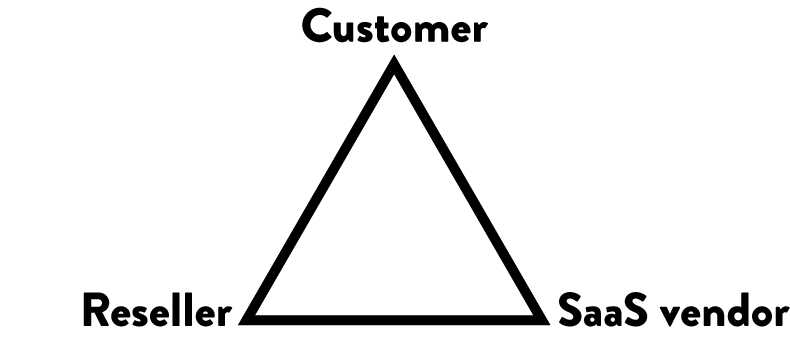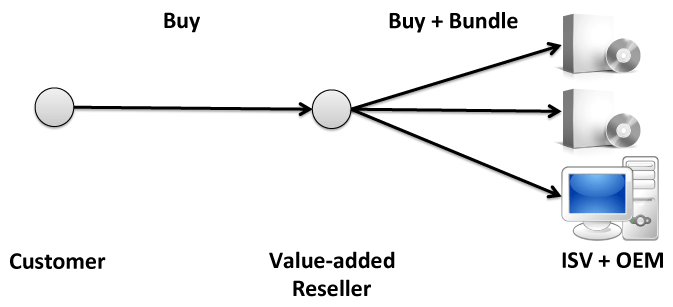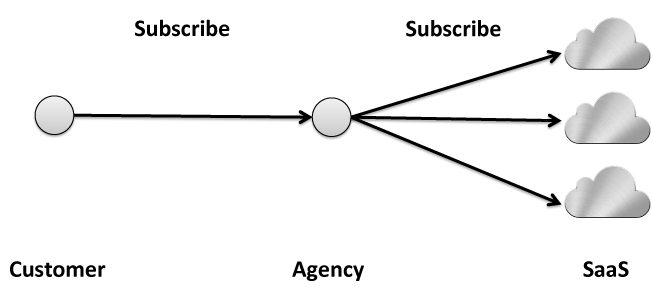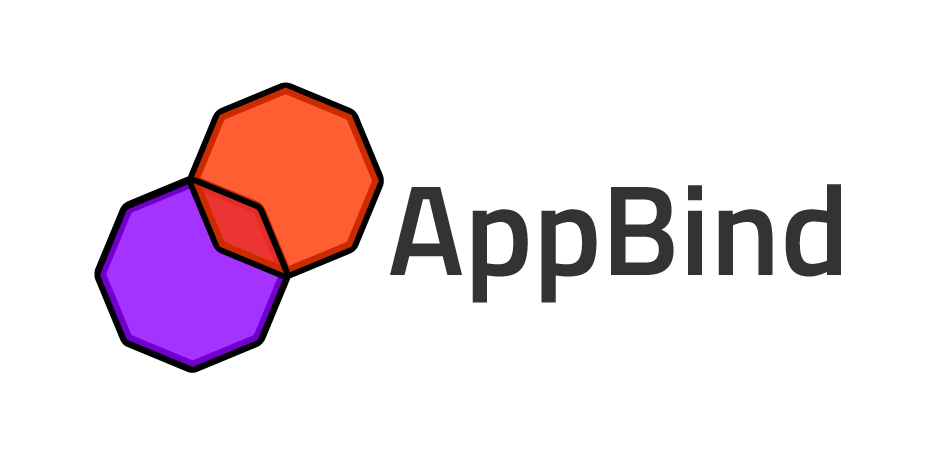Breaking the SaaS love triangle
This is part of a series covering the welcome keynote.
- Software partnerships are unpredictable revenue (0:00)
- A framework to understand all software partnerships (9:33)
- Breaking the SaaS love triangle (14:33)
What is the SaaS love triangle?
As mentioned previously, SaaS creates a love triangle. Customers must subscribe to the software maker, which creates an ongoing relationship directly between the customer and the software maker.

The SaaS love triangle
This means when a partner like a reseller or a distributor is in between the customer and the software maker, the software maker is motivated to squeeze out their partner.
Both are fighting for the same customer. It’s a love triangle, which is just as bad for business as it is for life.
Channel conflict slows growth
“A platform is when the economic value of everybody that uses it, exceeds the value of the company that creates it. Then it’s a platform.” — Bill Gates
This channel conflict has kept growth rates of SaaS low. Last year the global GDP of B2B SaaS was merely $46 billion. Yet Microsoft alone made $97 billion.
And Microsoft makes over 90% of its revenue from partners for the simple reason that they want partners to make 8 times the revenue as Microsoft.
Microsoft is a global behemoth because it figured out how to create a global value chain around it, a value chain that is much larger than itself.
A reseller’s snapshot of the PC software value chain

How did resellers build their business in the 1980s?
What Microsoft and its peers in the 1980s got really right was how to work with the companies that bought, sold, and supported software to end clients.
Indeed, almost all our partnership jargon today comes from the early 1980s. In the 1970s, it was common for hardware manufacturers to just include software as part of the product. However, the 1980s ushered in the era of “independent software vendors” (ISVs) that wrote software independently of the hardware companies.
These ISVs would work with consultants called value-added resellers (VARs) that were hired by end customers to build systems.
The VARs would buy and bundle hardware from Original Equipment Manufacturers (OEMs) and software from ISVs, then system-integrate (SI) the lot into a much bigger whole product solution to solve a customer’s unique problem, such as an office management system or a manufacturing process.
However, in the 21st century, this model has become much more difficult. It’s very hard to buy and bundle software as a value-added reseller because customers must subscribe to software maker directly.
And while value-added resellers still try to stitch together integrated systems to solve business problems for their clients, the friction of not being able to buy the components of the system directly themselves has frustrated the reseller model.
A vision for a SaaS reseller value chain

The future of how agencies will buy and sell subscriptions
Reselling subscription services is a different concept than reselling equipment. It may sound like a totally new model for software, but really it’s a very old model.
Consider the same problem but without computers. People hire agencies all the time to handle business operations such as accounting, marketing, logistics, maintenance and support and so on.
These agencies in turn subcontract to other service providers to fulfill parts of the contract. For instance, they might hire bookkeepers, designers, lawyers, trades, and so on.
The future is to align with this model. A customer should be able to hire (i.e. subscribe to) an agency to run their sales, marketing, IT, dev ops, and so on. This agency should be able to hire (i.e. subscribe to) software services to fulfill their contract.
There are, certainly, agencies who do this already, such as managed service providers (MSPs), Internet marketing agencies, and dev shops. However, they are struggling to juggle all the subscription accounting by hand.
Introducing AppBind, a solution
To be honest, I’ve talked about the love triangle for 10 years. I decided I should actually break ground and do something about it.
What’s truly needed to solve this problem is a way to automatically let agencies subscribe to software on their clients’ behalf, which automatically forwards all charges from the software maker onto their clients—plus their markup.
That way the agencies are not carrying any financial risk from unpaid expenses, no manual burden of accounting subscription charges, and can make real money from the value they are creating managing software for their clients.
That’s why I’m excited to be building it. I’m proud to announce AppBind, a subscription billing manager for resellers.
It works with every SaaS product that takes credit card subscriptions, and it requires no integrations, no partnership agreements, no friction.
Just create a new virtual credit card for every subscription you buy for your clients, and we will route and manage all the payments, markups, taxes, and accounting for you so you can focus on supporting your customer.
And if you’re a software company that needs to support your reseller channel, AppBind takes away one of the biggest frictions: how to manage the billing. With no work on your part. It already works with your credit card billing.
We’re in alpha mode right now. Email me to talk about how we can help you grow.

